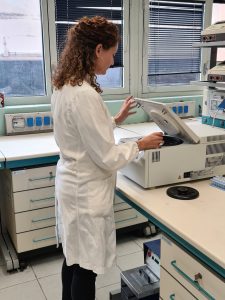A group of scientists from University of Siena focused their studies on “Dsup”, damage suppressor protein

In the vast universe of microscopic creatures there is a true superhero of tiny proportions: the tardigrade. Known colloquially as “water bears”, these small animals that live in the water show us every day that size isn’t everything.
Silvia Cantara, researcher in the department of Medical, Surgical and Neurological Sciences, tells us an interesting story of survival, protection and adaptation.
Who are “water bears” and what do they do that is so special?
“The tardigrade is a small creature (from 0,2 to approximately 1,2 mm in length) whose body has a head and four metamers (segments), each equipped with a pair of legs with nails. There are vegetarian, carnivorous and even cannibalistic tardigrades but all of them are eutelic: that is, they possess the same number of cells throughout their life and, when an individual grows, his cells increase in volume, not in number. Tardigrades have been to space and survived all manner of cosmic calamities. From the void of space to the depths of the ocean, they have proven themselves to be the MacGyvers of the microscopic world, capable of adapting to and withstanding truly extreme conditions. Indeed, they can survive up to 30 years without food or water, can live at temperatures as low as absolute zero or above boiling, and can enter a dormant state for centuries”.

How can the study of these tiny animals be useful to humans?
“Recently, research has focused the attention on a peculiar tardigrade protein called Dsup (damage suppressor protein), which is a nuclear protein that binds DNA. A group of scientists from the University of Siena, belonging to three different departments, in 2020 have joined their competences to address this question. In particular, together with Claudia Ricci (department of Medical, Surgical and Neurological Sciences); Claudia Landi, Lorenza Vantaggiato, Enxhi Shaba (department of Life Sciences) and Jlenia Brunetti (department of Medical Biotechnologies) we studied Dsup and its role in cellular protection from UV radiation and oxygen free radicals demonstrating that this protein influences the expression of endogenous genes under these stress conditions, in transfected human cells. In particular, the evidence on ‘mRNA showed that the expression of genes involved in DNA repair and cell cycle checkpoints is upregulated along with transcription factor modulation”.

What conclusions did the researchers reach?
“By performing a differential proteomic analysis of Dsup-transfected and control human cells, our group demonstrated, for the first time, that even in the absence of external stimuli, and more significantly, after stresses, Dsup activates mechanisms involved with the mRNA processing and stability, cytoplasmic stress granules, the DNA damage response, and the telomere maintenance. In conclusion, tardigrades and the Dsup protein are the dynamic duo that prove that even in the micro world, heroes come in the most unexpected ways. With their resilience and protective powers, these creatures are a true testament to the wonders of the microscopic universe and to how much humans can learn from nature”
How will your studies continue?
“Our group will go on in trying to decipher tardigrade secrets: there are several interesting application areas that we would like to explore. We are evaluating the role of Dsup in resistance to hypoxia and neurodegeneration. Furthermore, protein localization studies using fluorescence microscopy are in progress. We are sure that these little animals will never cease to amaze us”.

